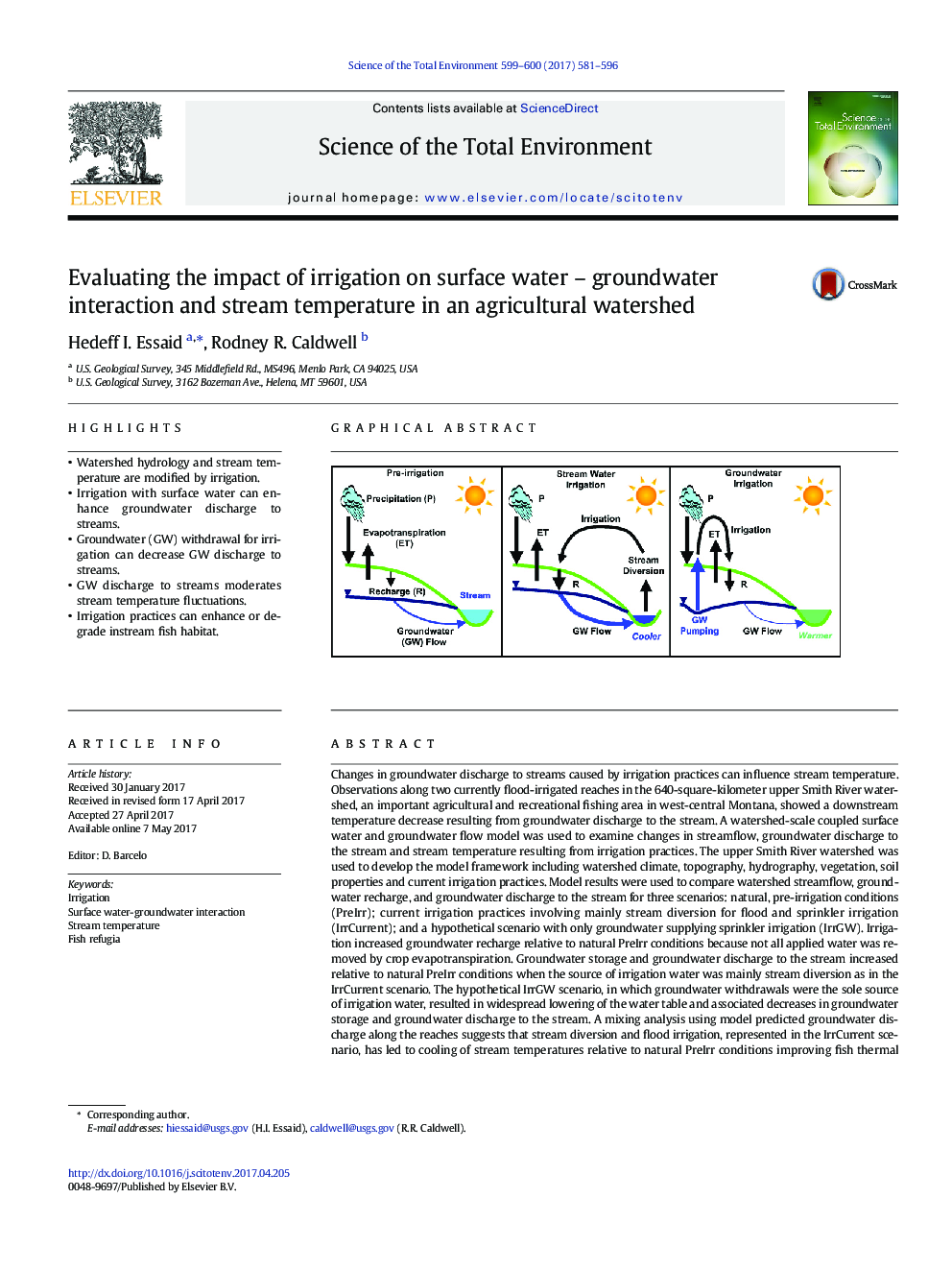| کد مقاله | کد نشریه | سال انتشار | مقاله انگلیسی | نسخه تمام متن |
|---|---|---|---|---|
| 5750523 | 1619698 | 2017 | 16 صفحه PDF | دانلود رایگان |
- Watershed hydrology and stream temperature are modified by irrigation.
- Irrigation with surface water can enhance groundwater discharge to streams.
- Groundwater (GW) withdrawal for irrigation can decrease GW discharge to streams.
- GW discharge to streams moderates stream temperature fluctuations.
- Irrigation practices can enhance or degrade instream fish habitat.
Changes in groundwater discharge to streams caused by irrigation practices can influence stream temperature. Observations along two currently flood-irrigated reaches in the 640-square-kilometer upper Smith River watershed, an important agricultural and recreational fishing area in west-central Montana, showed a downstream temperature decrease resulting from groundwater discharge to the stream. A watershed-scale coupled surface water and groundwater flow model was used to examine changes in streamflow, groundwater discharge to the stream and stream temperature resulting from irrigation practices. The upper Smith River watershed was used to develop the model framework including watershed climate, topography, hydrography, vegetation, soil properties and current irrigation practices. Model results were used to compare watershed streamflow, groundwater recharge, and groundwater discharge to the stream for three scenarios: natural, pre-irrigation conditions (PreIrr); current irrigation practices involving mainly stream diversion for flood and sprinkler irrigation (IrrCurrent); and a hypothetical scenario with only groundwater supplying sprinkler irrigation (IrrGW). Irrigation increased groundwater recharge relative to natural PreIrr conditions because not all applied water was removed by crop evapotranspiration. Groundwater storage and groundwater discharge to the stream increased relative to natural PreIrr conditions when the source of irrigation water was mainly stream diversion as in the IrrCurrent scenario. The hypothetical IrrGW scenario, in which groundwater withdrawals were the sole source of irrigation water, resulted in widespread lowering of the water table and associated decreases in groundwater storage and groundwater discharge to the stream. A mixing analysis using model predicted groundwater discharge along the reaches suggests that stream diversion and flood irrigation, represented in the IrrCurrent scenario, has led to cooling of stream temperatures relative to natural PreIrr conditions improving fish thermal habitat. However, the decrease in groundwater discharge in the IrrGW scenario resulting from large-scale groundwater withdrawal for irrigation led to warmer than natural stream temperatures and possible degradation of fish habitat.
287
Journal: Science of The Total Environment - Volumes 599â600, 1 December 2017, Pages 581-596
